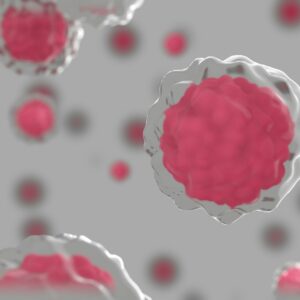The Temporomandibular Joint (TMJ) is a pivotal structure that pairs hinge and sliding motions, allowing for complex movements required for chewing and speaking. Disorders of this joint, commonly known as TMJ disorders, can manifest through a variety of symptoms that impact one’s ability to perform these fundamental activities.
Often misunderstood or misdiagnosed, TMJ disorders encompass a host of issues from jaw stiffness to debilitating pain. Finding a specialized healthcare provider who focuses on TMJ management—such as a TMJ dentist specialist—can be essential in receiving correct diagnosis and effective treatment.
Causes of TMJ Disorders
The etiology of TMJ disorders can be multifaceted, involving a combination of factors that can predispose an individual to develop these issues. While the exact cause may be difficult to pinpoint, it’s known that genetic variations affecting jaw anatomy, the presence of arthritis, or jaw injuries can lead to TMJ disorders.
Stress and associated behaviors, like bruxism—which is the grinding or clenching of teeth—can also play a critical role in exacerbating TMJ conditions. Lifestyle habits, such as poor posture while working at a computer or habitual gum chewing, may further contribute to developing and intensifying symptoms.
Recognizing Symptoms of TMJ Disorders
Identifying TMJ disorders early on is instrumental in mitigating their impact and preventing further complications. The most conspicuous symptoms include persistent pain in the jaw area, difficulty chewing or pain while chewing, and a clicking or popping noise accompanying the opening or shutting of the mouth.
These sounds may or may not be painful, but they suggest an abnormality with the joint’s movement. Patients may also notice their jaw getting “stuck” or locked in a particular position.
There are, however, more subtle signs to be aware of, such as facial aches extending towards the temple, neck, or ear, headaches and migraines, andand a change in the fit of dental appliances.
When experienced, these symptoms should prompt an appointment with a healthcare provider who can assess for TMJ disorders.
Diagnoses and Professional Assessments
Diagnosing TMJ disorders requires a multi-disciplinary approach that may involve dentists, doctors, and even physical therapists.
Typically, the process begins with a detailed examination of the patient’s jaw movements, listening for sounds that indicate disorders, and palpating the joint and surrounding muscles for areas of discomfort or pain.
Imaging studies such as panoramic X-rays, MRI scans, or computed tomography (CT) can provide a more detailed visualization of the temporomandibular joint and assess the extent of the issue.
These thorough assessments ascertain not only the presence of a TMJ disorder but also its classification among the various subtypes, which can range from muscle-related problems to joint derangement syndromes.
Non-Invasive Treatments for TMJ Disorders
Treatment plans for TMJ disorders generally commence with conservative, non-invasive therapies aimed at reducing symptoms and increasing joint mobility. Many patients find relief through home remedies such as moist heat or ice packs to alleviate pain and reduce inflammation.
Implementing a soft food diet can minimize jaw strain during the healing process, while over-the-counter pain relievers and anti-inflammatory medications offer temporary respite from discomfort.
Patients can also benefit from learning and practicing stress management and relaxation techniques such as meditation, mindfulness, or biofeedback, which help decrease the overall tension in the jaw muscles.
Jaw exercises and stretches designed by physical therapists can further help restore the range of motion and strengthen the muscles associated with the TMJ.
Advanced Treatment Options
When conservative measures fail to alleviate TMJ disorder symptoms, advanced treatment options may be warranted. One option includes dental appliances, such as stabilization splints or mouth guards. These devices can help position the jaw correctly, prevent teeth grinding, and reduce the strain on the TMJ.
Corrective dental treatments like braces or aligners may be recommended when dental malocclusions contribute to TMJ disorders.
For those with persistent and severe symptoms, more invasive procedures such as corticosteroid injections into the TMJ, arthrocentesis, or even TMJ surgery might be considered as a final option. These more aggressive treatments require careful evaluation and should only be undertaken with a clear understanding of the potential risks and benefits.
The Link Between TMJ Disorders and Other Health Conditions
TMJ disorders do not exist in isolation and may be closely connected with other medical conditions. For example, individuals suffering from certain forms of arthritis may encounter higher instances of TMJ involvement.
There is also a noted overlap with sleep disorders such as sleep apnea, where TMJ symptoms can exacerbate sleep interruptions and vice versa. Researchers highlight a bidirectional relationship where TMJ can influence body posture and pain perception, potentially cascading into broader musculoskeletal issues.
Acknowledging these connections allows for a more integrated approach to treatment, addressing the TMJ disorder and accompanying health challenges.
Managing TMJ Disorders: A Holistic Approach
Considering TMJ disorders in the context of an individual’s overall health can significantly enhance management strategies. A holistic approach to TMJ disorder treatment incorporates nutritional counseling, emphasizing foods that support joint health and reducing those that promote inflammation.
Supplementing dietary changes with regular physical activity and ergonomics education can also alleviate symptoms. Complementary therapies such as acupuncture, chiropractic adjustments, or massage therapy may provide additional avenues of relief by focusing on the body’s alignment and reducing tensions that contribute to TMJ disorders.
Long-Term Considerations and Lifestyle Changes
For those living with chronic TMJ disorders, long-term management is critical to maintaining functionality and quality of life. Chronic conditions may necessitate an ongoing treatment routine, including check-ins with health professionals, use of prescribed therapies, and continual adjustment of lifestyle habits.
These modifications could range from adopting a jaw-friendly diet to implementing ergonomic changes at work and home. Practicing jaw relaxation exercises and mindfulness can also be a part of one’s daily routine, helping to control stress levels that may exacerbate TMJ symptoms.
Concluding Thoughts on TMJ Disorders
Comprehensively addressing TMJ disorders involves a robust understanding of the condition, from its varied symptoms and causative factors to the broad spectrum of available treatments. Empowering patients with the knowledge to recognize warning signs and engage in proactive management measures is essential.
Building a collaboration between patients and healthcare providers can pave the way for individualized treatment plans that not only relieve the symptoms but also address the underlying causes of TMJ disorders. Such a strategy can ultimately enhance the comfort and well-being of those affected by this complex condition.





